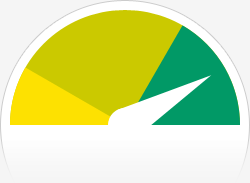After unboxing my Apple iPad and playing around with it pretty constantly I am reminded of an old argument I made a while back regarding the collision of technology and comic books. Specifically the two comic book companies (there are many more, but these two are the leaders) Marvel and DC are either totally asleep or schizophrenic when it comes to technology and “The Bleeding Edge”. It used to be in time long ago that content providers had a seamless lock on their entire business model, they hired creative staff, they created master-proofs, they printed them and distributed them to their customers. The delineation was delightfully cut and dried, producers would release on their schedule and consumers would loyally go and consume when the producer gave the wink and the nod. There was only one format, the locked-in format and there was no choice in the format. In comic books, everyone went to the comic book store, they had a pull list, they showed up loyally every wednesday and paid for their books and the world made sense.
Then technology came. Specifically in this case, the Apple iPad. This is the first device that has a display that is compatible with displaying comic-books (and manga for that matter) and is user-friendly enough and convenient enough for people to sit in their favorite chair or on their favorite couch and voraciously consume comic books. This new device enables the customer to see the content they want in the form they want it in. No more heavy longboxes, no more paper, no more dead-trees-and-ink. Now every comic book they own can either be in their device or on a USB Memory Stick dangling from their car keys. Whats more, it takes the printing and distribution middlemen out of the equation altogether, so now it’s just Comic Book Producer and Consumer, face to face.
Or at least that would be if people were concentrating on the bleeding edge, but they aren’t. DC has yet to even come up with an App, but Marvel has. This isn’t to crow at Marvel beating DC since Marvel is stuck in the corner being schizophrenic and quietly muttering to itself. “Do I print, I gotta print. I also gotta do flash, oh yes, the flash is pretty, but then the iPad, so nice…” and the customers are titillated but growing restive with the cliff-face of “Perfect… perfect… Uh, WTF?” The Marvel App is a glittering wonder, that leaves you like Wiley E. Coyote after he runs off the cliff, but before he notices the violation of the law of gravity.
The mantra for 21st Century business is “Adapt or Die” and in this sense, both Marvel and DC aren’t really showing signs that adaptation is foremost on their minds, from observable behavior. I’ve said this before and I will say it again, now that the customer is free *and* enabled with high technology they can and will actively compensate for the failures of their beloved comic book producers to provide a way for us to get what we want, when we want it. We don’t want it on paper, we want it in digital format. We want micropayments and we want subscriptions, and we want our comics pushed to us when they are published.
There are two worlds running concurrently:
In the first world you have everyone being upright and legal, this is a fantasyworld because so far the instrumentation doesn’t exist for us, the consumers to engage with this world yet. What do I imagine in this world? I see two apps on the Apple iPad. Marvel and DC. The trade images they put in their movies, it’s most recognizable. So lets tap once on the DC App (easier to imagine since it doesn’t exist yet). I see a system that closely resembles the Marvel storefront, a place to browse Comics, a Library of purchased content, and a Settings page. On the Settings Page is my preferred method of payment, my debit or credit card is on file, through the “Payment” button. Near that is “My Subscriptions” which is essentially my pull-list for DC. I want all GL, BG, WW, BM, and SM, also want Flash and I want to follow Brightest Day, for example. On Wednesday, around 2pm (throw a bone to the printed-comics people) I open the DC app and there is a list of all the issues on my pull list. I tap “Buy Issue” button and it downloads. I sync with my iTunes and it all gets backed up. DC could then turn around and sell me a backup application for $10 that allows me to back all my comics up on a storage medium of my choosing in some popular format, like PDF, CBR, or CBZ. Everyone is happy, I have my comics with me wherever I go, DC is happy because they are selling comics like hotcakes, it’s win-win all around.
In the second world, the world some of us inhabit, it’s a darker and less legal world. Our beloved companies have yet to publish any digital content in any reliable way and we’re patently impatient for progress so we strike out on our own to make things the way we want them. People go online and find, using BitTorrent each of their titles, scanned in beautiful color format, conveniently stored in CBR or CBZ files. People download this content without paying anyone anything, we click and drag these files to sync software and we place them on our devices. We get what we want, but it’s piracy, it’s unfair, and ultimately it’s harmful to the producers. On the other hand, even if it’s slightly annoying, the customers are happy. At least there is that.
What does it come down to? If you don’t make the effort to constantly expand and adapt your business model to suit technology your customers may innovate without you. The fact that we don’t have this kind of infrastructure in place yet is very stunning to me. For $1.99 an issue Marvel and DC would be able to skip PRINTING, be able to skip DISTRIBUTION, skip entire super-expensive channels altogether and engage in direct marketing with their consumers. No overhead means all that more profit to Marvel and DC. You would think that sheer greed would have driven both of these companies to have an Apple iPad app on the market the day the iPad was released. No. All we have is Marvel dipping their toes into the water, titillating us and leaving us stymied. DC isn’t even in sight, it’s mind-boggling.


